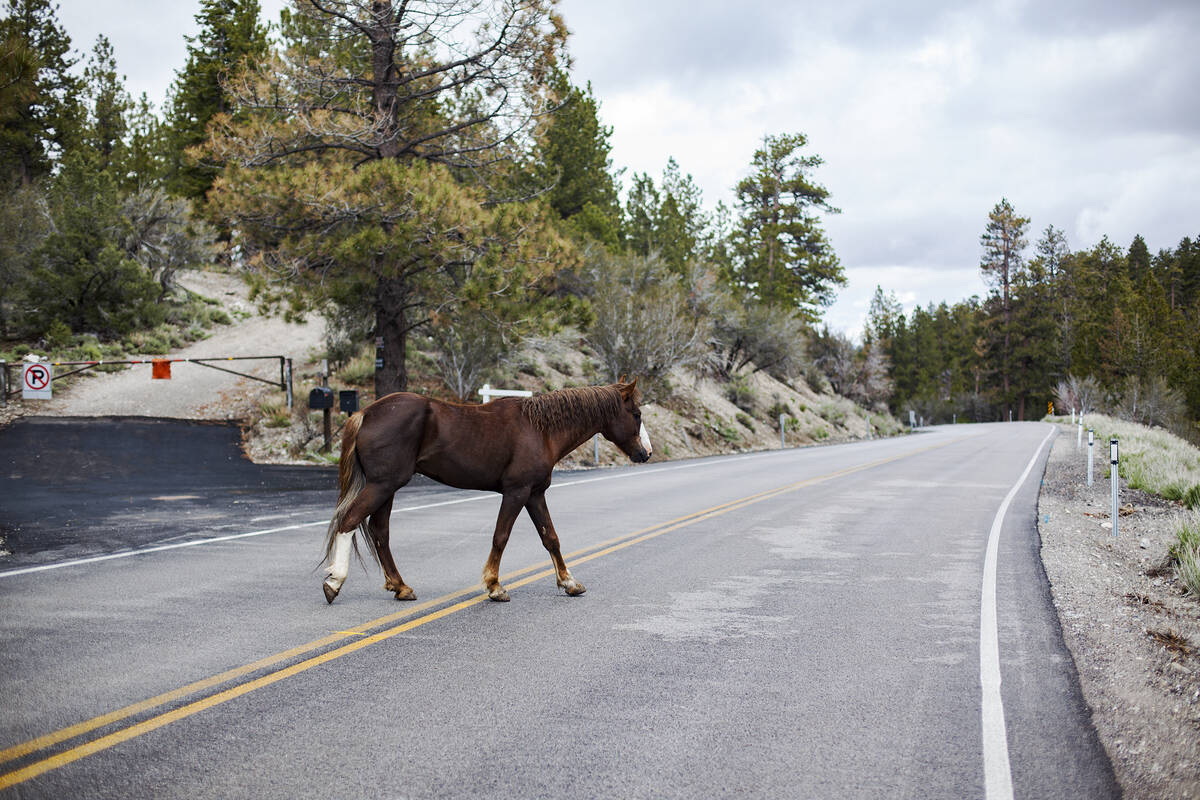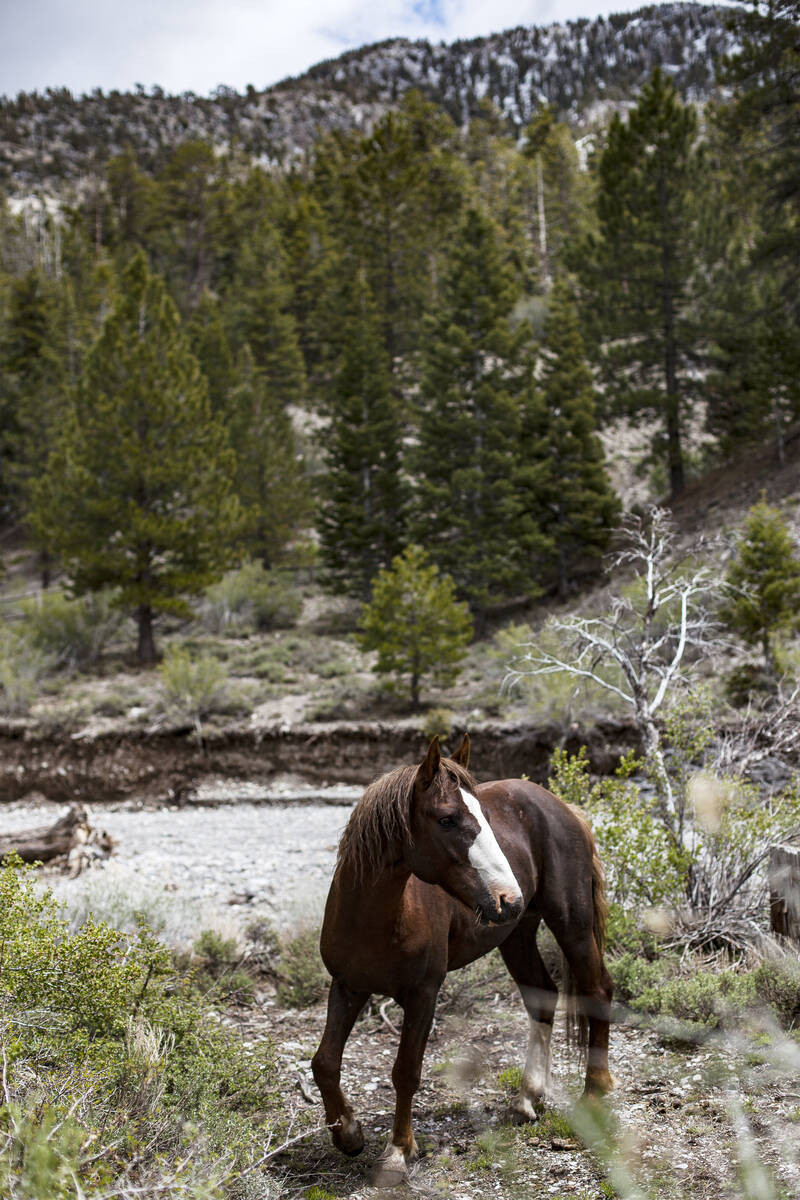‘Everybody loves wild horses’: Adoption program sees success, report says
A free-market environmental group has recommended expanding a Bureau of Land Management wild horse and burro adoption program that it says is saving taxpayers millions of dollars a year.
A wild horse advocacy group has called the program a failure.
The Property and Environment Research Center issued a report this week that recommended increasing the financial incentive to adopt wild horses and burros from $1,000 to $3,000, or establishing a “frequent adopter” program where people who adopt consistently can be eligible for bonuses.
The group also recommended harnessing private partnerships to place more wild horses and burros in the eastern part of the United States. If a “Pony Express” were to be established to transport horses east, there could be a rise of adoptions, said Brian Yablonski, CEO of the center.
“We are cognizant that this is an issue fraught with emotion and symbolism,” Yablonski said. “But there’s kind of a romance versus reality component here. … Everybody loves wild horses, but there’s a reality: There’s just too many horses on too little land, and we need common-sense solutions.”
Population explosion
The country’s wild horses — many of which live on public land in Nevada — are an icon of the American West but for years have been struggling with overpopulation. Left unattended, the feral horses reproduce too quickly and cause strain on the environment.
In the West, there are 73,000 wild horses and burros on public lands, nearly three times the national estimated sustainable threshold of 27,000, according to the report.
To control the population, the BLM gathers and removes wild horses and burros from public lands, and in some locations uses birth control to slow population growth. Five years ago, it implemented a wild horse adoption incentive program, which provides incentives to adopt the animals. More than 62,000 horses live in off-range pastures and facilities, which cost taxpayers $108.5 million in 2023, the report said.
Since the program began, 15,000 wild horses and burros have been adopted, saving taxpayers $66 million in holding costs. The program is on track to provide homes to more than 30,000 animals, according to the report.
Annual adoptions have more than doubled since the adoption incentive program went into effect, according to the report, which said it is expected to save $100 million in taxpayer dollars. The report suggests using some of the money saved through the adoption program to support other strategies to ease the overpopulation, such as investing in immunocontraception efforts and expanding training programs that make the wild horses more appealing to adopt.
Critical of program
Amelia Perrin, senior communications manager with the American Wild Horse Conservation, called the adoption incentive program a failure.
“This report offers nothing new,” Perrin said. “It’s an endorsement of the expansion of a fundamentally broken management system.”
Perrin argues that offering cash incentives make the problem worse and that the program is not adopting out enough wild horses to come close to the number of horses the BLM is rounding up. The adoption market is not keeping up with the demand, Perrin said.
“The thing that’s left out the most is how the horses are treated, and what the humane outcome is for these animals,” she said.
Her organization claims the adoption program is a pipeline to slaughterhouses, as nefarious adopters enter the program and the BLM doesn’t do background checks on first-time adopters.
“Increasing the incentive will do nothing more than just send more and more horses into the slaughter pipeline,” Perrin said.
American Wild Horse Conservation advocates the use of a fertility control program with doses of PZP, an immunocontraceptive vaccine used for managing wildlife populations. Rather than cash incentives, her group advocates for veterinary vouchers to offset the costs of care for the horses.
Perrin claims the BLM’s holding facilities have poor conditions, and in one facility in Winnemucca, representatives from American Wild Horse Conservation found what they called “disturbing conditions,” including a severely injured, dead or dying foal lying in a pen, as well as overcrowding and a lack of shelter and windbreaks.
The BLM denies horses are held in crowded holding pens and asserts the short-term holding corrals provide ample space to horses.
BLM safeguards
The BLM said it has policies in place to safeguard the animals. It requires adopters to provide one year of good care before title of ownership is transferred, and where the animal lives must be approved by the BLM, according to its website. After a year, a veterinarian or county extension agent must verify the humane care and treatment and sign a letter to return to the BLM before the animal becomes private property.
It also requires a signature from the adopter to certify under penalty of prosecution the animal will be provided humane care and the adopter will not knowingly sell the animal or transfer ownership to a person or an organization intending to give the animal to slaughter or processing into commercial products.
“Since the inception of the Adoption Incentive Program, thousands of Americans have chosen to open their homes to a new wild horse or burro companion,” a BLM spokesperson said in a statement. “This successful program not only saves taxpayer dollars, it helps foster healthier rangelands and a brighter future for the wild herds and other wildlife that roam public lands.”
Contact Jessica Hill at jehill@reviewjournal.com. Follow @jess_hillyeah on X.



















